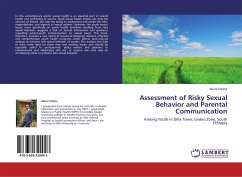The aim of this paper is to showcase the significant diagnostic value of common pathways among sexual homicide perpetrators. A number of studies were reviewed in order to update and summarize the relevant literature on the incidence, offender classifications, crime scene behavior characteristics, victimology, as well as dynamics, motivational drives, and functions of sexual homicide. Results conclude that most sexual murderers are non-psychotic white males aged in their late 20's when they first kill. Considerably greater social isolation, obsessional thinking, dysphoric rumination and craving for affection are expressed among sexual killers compared to non-sexually offending psychopaths, while higher prevalence of maladaptive personality traits and paraphilic behaviors is experienced among sexual killers in comparison to non-homicidal sexual offenders.
Bitte wählen Sie Ihr Anliegen aus.
Rechnungen
Retourenschein anfordern
Bestellstatus
Storno








